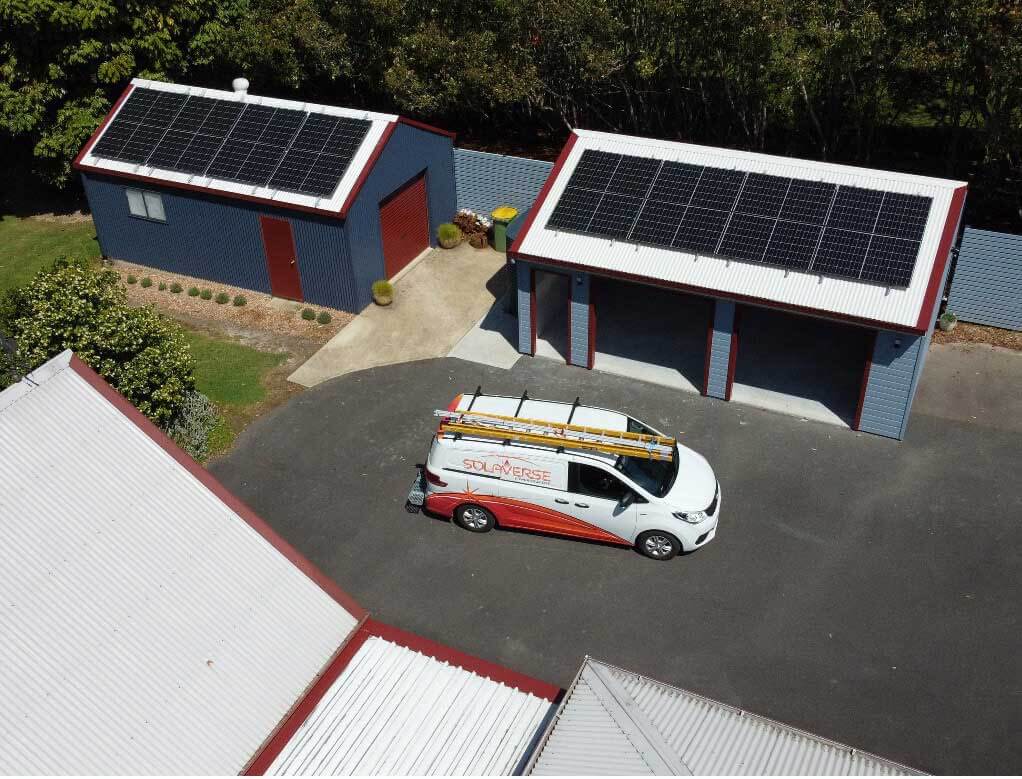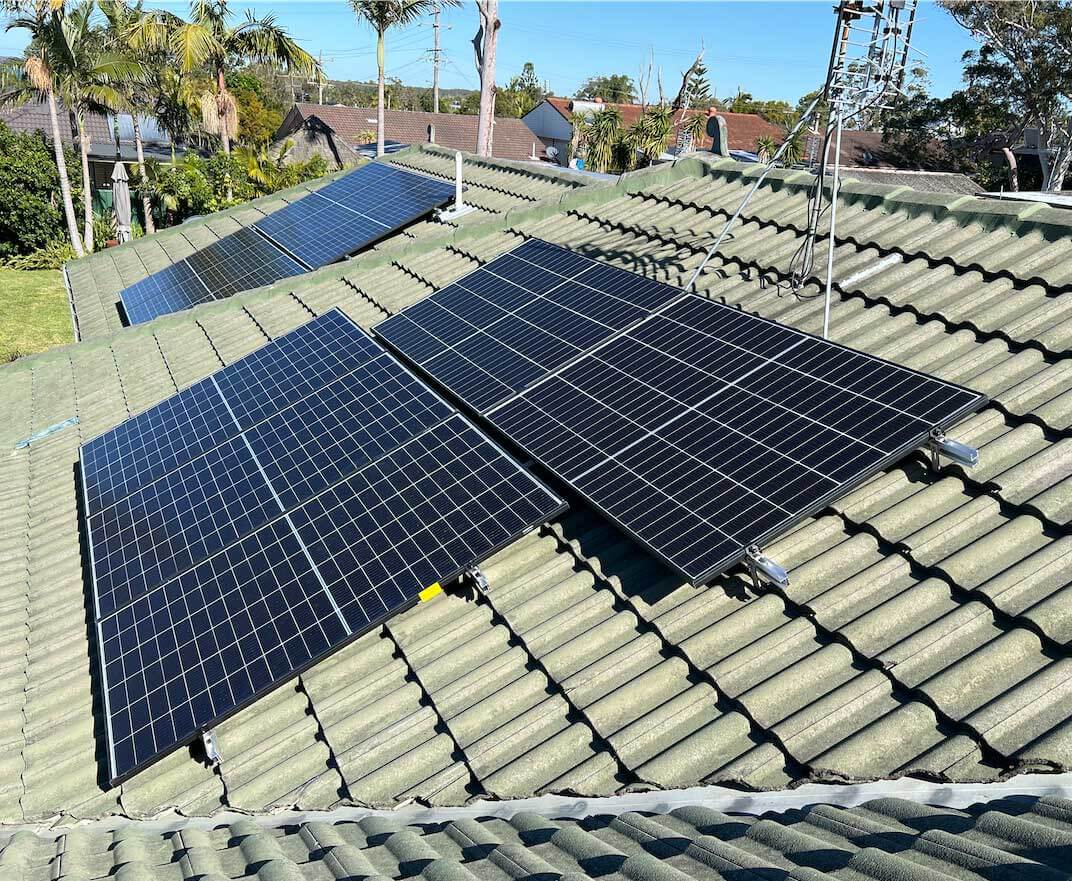
100% Australia-Owned & Operated | 50 Years of Combined Experience


Hi, I’m Steve Brown.

Hi, I’m Steve Brown.
I’ve been in the solar and electrical industry for over 20 years, starting in the Australian Defence Force where I trained as an Electrical Technician.
Since then, I’ve worked on thousands of installs across NSW, from family homes to large commercial jobs. And in that time, I’ve seen just about everything: the good, the bad, and the flat-out dodgy.
The 8 mistakes below are the most common issues I’ve seen homeowners run into. If you can avoid them, you’ll be well ahead. Whether you go with us or not, I hope it helps you make a confident decision.
8 Expensive Solar Mistakes
- Know what rebates you’re eligible for
- Feel confident before signing anything
- Save on bills for decades, not just the first year
- Know what rebates you’re eligible for
- Feel confident before signing anything
- Save on bills for decades, not just the first year
MISTAKE #1
Believing the rebate headlines without understanding how they work
It’s true. There are real government incentives available to help reduce the upfront cost of going solar. But a lot of confusion comes from how these rebates are explained (or oversimplified) in ads.
The main federal incentive is the STC rebate, which offers an upfront discount on solar systems under 100kW. What many don’t realise is that this scheme is already being phased out. It reduces in value each year until it ends completely in 2030, so the rebate is more valuable now than it will be next year.
On top of that, there are state-based programs, interest-free loans, battery incentives, and council rebates, but eligibility varies depending on where you live, your household income, and your system setup.
It’s worth taking five minutes to understand what’s actually on the table before you get a quote. Refer to the table below for a quick overview of the main rebates currently available in NSW.
| Federal SRES (STC) | ~30% upfront solar rebate | ✅ Ongoing |
| Peak Demand Reduction Scheme | $1.6–2.4k + $250–400 VPP | Ends Jun 2025 (VPP incentive continues) |
| NSW Solar Panel Rebate | Up to $3k | ✅ Ongoing |
| Empowering Homes Loan | $9k–14k interest-free loans | ✅ Pilot complete, rollout pending |
| SoAR Grant | 50% up to $150k for shared solar | ✅ Ongoing |
| Smart Distributed Batteries | VPP incentive for batteries | ✅ Ongoing |
| Local Council Rebates | Variable, council-specific | ✅ Ongoing |
| Feed-in Tariffs | Export credits via retailers | ✅ Ongoing |
MISTAKE #2
Not understanding what you’re buying
Even when quotes show the same system size, the components and support can vary widely. Use this table to assess what’s really included:
| Panels | Reputable Tier 1 brand with a 25-year performance warranty and local Australian support. 📝 Note: Tier 1 refers to financially stable, bank-backed manufacturers, not necessarily better panel quality. | Is the brand Tier 1? Who handles support if a panel fails? Is there an Australian office? |
| Inverter | Trusted brand (e.g. Fronius, Sungrow) with at least a 10-year warranty and strong service history | What brand/model are you using? What’s its replacement process like if it fails? |
| Warranty | Clear, separate warranties for product, performance, and installation | Is labour included if something goes wrong? How long is your install warranty? |
| Support | System monitoring, help with grid connection, and support if your bills don’t drop as expected | Do you offer post-install help? Who should I contact if something isn’t working? |
MISTAKE #3
Getting the wrong system size for your home
A system that’s too big can take longer to pay off. One that’s too small might barely scratch your energy bills. Many homeowners size up, hoping to “sell extra power back to the grid”, but feed-in tariffs (what you earn for excess power) are low, often just 5–10c per kWh, compared to paying 30–40c for power from the grid.
| 1-2 People | Low (<10 kWh) | 3-4 kW |
| 2-3 People | Moderate (10-20 kWh) | 4-6 kW |
| 3-5 People | High (20-30 kWh) | 6.6-8 kW |
| Large Family / pool / EV | Very High (30+ kWh) | 8-10+ kW |
So, oversizing for a “profit” rarely works out. The smarter play is to size your system around how much power you use during daylight hours, when solar is generated, and consider future usage (e.g. working from home, EV charging, or a battery).
Things you should ask before you commit:
- What’s my average daytime usage?
- What’s the current feed-in tariff in my area?
- Will this system still work if I add a battery or EV later?
- Can I add more panels down the track?
Feed-in tariffs help, but your biggest savings come from using solar as it’s generated, not selling it back.
MISTAKE #4
Not knowing who’s actually installing your system
When you sign with a solar company, you’d expect their team to install it, but that’s not always the case.
Many solar retailers outsource installations to subcontractors, and while some are great, others are rushed, underpaid, or barely qualified. That’s when corners get cut: poor cable runs, wrong tilt angles, loose fittings. All things that can hurt performance or void your warranty.
Here’s a quick list of what to ask before anyone climbs a ladder:
| Are your installers CEC-accredited? | Only CEC-accredited installers can legally connect to the grid and claim rebates. |
| Are the installers part of your team or subcontracted? | Direct employees are usually better trained and more accountable. |
| Do I get a written workmanship warranty? | You want more than a handshake. Ask for at least 5 years. |
| Who do I contact if there’s an issue after install? | You don’t want to be caught between a retailer and a subcontractor pointing fingers. |

MISTAKE #5
Thinking the job ends once the panels go up
While the panels may be visible proof of progress, the real work starts after the install, and that’s where too many people are left in the dark.
Here’s what a good post-install process should include:
- System walkthrough – Someone should show you how to use your inverter or app to monitor performance. You shouldn’t be left guessing.
- Monitoring – Good providers will track your system for at least a few days to ensure it’s generating as expected.
- Paperwork & compliance – You should receive your manuals, warranty info, and certificates for the installation.
- Grid connection – Your meter needs to be configured or upgraded so you can feed power back and claim your feed-in tariff.
- Support – You should know exactly who to contact if something doesn’t look right.
Panels that look great but underperform quietly can cost you thousands over time. Make sure someone’s checking, and you’re shown how to check for yourself.
MISTAKE #6
Assuming a battery is always the next step
For many households, the idea of going “off-grid” or storing solar power for night-time use sounds appealing, and batteries can help with that. But assuming you need one from day one could leave you thousands of dollars out of pocket, with little extra benefit.
Whether a battery makes sense depends on your goals, your usage habits, and your location.
Should you add a battery now or later? Here’s a quick comparison:
| Night-time usage | Worth it if you use a lot of power after sunset | May not be necessary if night usage is low |
| Payback period | Typically 8–12+ years | You can start saving now and reassess later |
| Rebates & incentives | Vary by state — limited in some areas | May improve in the future |
| Peace of mind (e.g. blackouts) | Provides backup power if designed that way | Not urgent unless you experience frequent outages |
| Upfront cost | Adds ~$8,000–$15,000+ to your system | You can stagger the investment |
What to do instead?
I recommend starting with solar. Track your usage, get familiar with how much excess energy you produce, and then decide if adding a battery down the line makes financial and practical sense.
This way, you’re building your system based on real data, not just the hype.

MISTAKE #7
Going with the first quote (or the loudest ad)
We get it. Solar quotes can feel overwhelming, and it’s tempting to just go with the first company that calls you back or the one that’s been all over your feed.
But this decision can affect your home (and wallet) for the next 25 years.
Here’s why getting at least 2–3 quotes matters:
- Prices can vary wildly — Some companies quote high margins; others cut corners. Without comparison, you won’t know what’s reasonable.
- Different system designs — One installer might recommend a 6.6kW system, another 10kW. Each will affect your savings differently.
- Equipment quality — Not all panels and inverters are created equal. You might get top-tier brands in one quote and generic products in another.
- Installers’ credentials — Some providers use subcontractors or outsourced teams. Always ask who’s actually doing the job (see Mistake #4).
- Warranties & service — Make sure you’re comparing installation warranties, not just product warranties. Some include ongoing support, others don’t.
What to do instead?
Take the time to compare apples with apples. Ask questions, read the fine print, and understand why one quote differs from another, not just in price, but in what you’re getting for that price. It’s not about going with the cheapest or the flashiest. It’s about making a confident, informed choice.
MISTAKE #8
Choosing the cheapest quote without knowing what’s missing
It’s natural to want the best price, but in solar, cheapest rarely means best.
If you see a quote that’s hundreds or even thousands of dollars less than the others, stop and ask: What exactly am I giving up for that price?
Cheap quotes often leave out crucial details — things that could cost you more in the long run.
| Generic or unknown-brand panels | Are they Tier 1? Are they on the CEC-approved list? |
| Short warranty (e.g. 5 years) | Quality panels and inverters come with 10–25 years |
| No monitoring or app access | Can you actually track your usage and system performance? |
| Subcontracted installers | Are they CEC-accredited? Will the company take responsibility? |
| No site visit or shading analysis | Has anyone actually inspected your roof and usage patterns? |
| No post-installation support | Who do you call if there’s an issue 6 months later? |
A cheaper system today might mean a more expensive headache tomorrow. Always ask why a quote is cheaper and whether anything important has been left out. The best value is in a system that works reliably, saves you money over time, and is backed by people who’ll still pick up the phone in 5 years.
Curious if solar suits your home and what rebates might apply?
If you’ve read this far, chances are you’re serious about getting it right.
We’d be happy to help. No pressure, no pushy sales talk.
Click below to get a personalised quote and find out what rebates you’re eligible for.
What others say about us

Trustindex verifies that the original source of the review is Google. Asked SolaVerse some questions about solar here on the Central Coast, and David was very professional in his response, making sure all questions were answered, giving me complete confidence to make a move. SolaVerse are in the business off satisfying clients, not filling pockets, it is genuine advice & direction they give you. Couldn't recommend them enough. Cheers guys!Trustindex verifies that the original source of the review is Google. Solarverse more than exceeded our expectations! At the initial quote when Steve explained all aspects of solar energy and answered our questions we felt comfortable and informed. Steve kept us updated as he handled the government paperwork involved in a professional and timely manner. Within 4 weeks we had a date for installation. Dave Steve and Chris arrived before 7am and worked quietly and efficiently throughout the day (I’ve honestly never seen tradesmen work harder!) and the job was completed well before the 2 days quoted. We were so impressed with every aspect of this process and we definitely recommend Solarverse !Trustindex verifies that the original source of the review is Google. Dave and Steve worked tirelessly in summer heat for two days to install our solar panels. Not happy with millimetre precision, Dave, Steve and the boys endeavoured to take our installation from savings to Statement piece. We are exceedingly grateful for the panels Solaverse has done and would gladly recommend them to all.Trustindex verifies that the original source of the review is Google. I found Dave from SolaVerse to be completely transparentt, professional.....and understanding which is really hard to find these days.......from day 1 i had clear communication to expert guidance, they made the entire process stress-free. It’s was refreshing........thanks Dave.Trustindex verifies that the original source of the review is Google. David was absolutely amazing! I reached out to him on behalf of a friend for some information about solar energy as my friend had some issues with other companies not showing up or responding to enquiries. My friend was ready to buy! David helped instantly, going above and beyond and creating a complete solar energy plan for my friend and provided a recommendation for who could service him in Melbourne. Honestly, top notch service!!Trustindex verifies that the original source of the review is Google. Steven has excellent communication,helped ordinary people understand sola systems workings. Before and after service questions always were answered and I couldn't have had easier after product service . Always arrived on time when I was told he was coming to fit the product. Diligent worker..Trustindex verifies that the original source of the review is Google. Very happy with the install and follow up.👍Trustindex verifies that the original source of the review is Google. We had SolaVerse install our solar system in June and are very happy with the result. We have seen big savings on our power bill and would highly recommend SolarVerse.Verified by TrustindexTrustindex verified badge is the Universal Symbol of Trust. Only the greatest companies can get the verified badge who has a review score above 4.5, based on customer reviews over the past 12 months. Read more
Request a free quote
